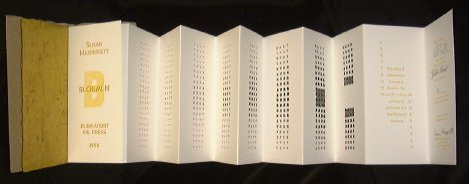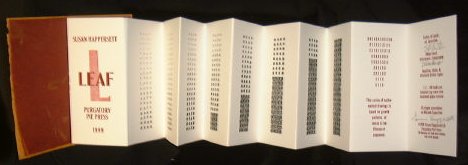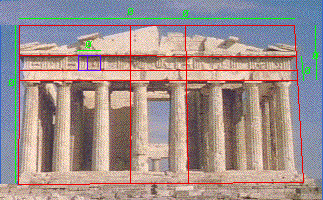Susan Happersett is one of the many artists
inspired by math and the Fibonacci sequence. Happersett's set of books,
"Box of Growth," relates directly to the Fibonacci Sequence in nature and
was one of our group's inspirations for this project.
"Box of Growth" is a collection of five handmade books, each about a particular
occurrence of the Fibonacci sequence in nature. The books use a visual language
of characters composed of Fibonacci numbers of lines (1 line, 2 lines, 3
lines, 5 lines), arranged to represent patterns of growth and decay. Every
aspect of each book, the colors used, the font, the texture of the paper,
the layout of the description on the final page, is connected to the object
that book describes, such as a conch shell or a flower.
The books are available for viewing in the John Hay Library and we would
suggest that Math 8 students go to see them.
For more information on Susan Happersett's mathematical art, follow this
outside link, an article by Ivars Peterson on her work, especially her interest
in mobius bands <www.maa.org/mathland/mathtrek_6_11_01.html>
|


"Box of Growth" by Susan Happersett, from the Purgatory
Pie Press site, <www.purgatorypiepress.com/artistsbooks_files/boxofgrowth.htm>
|


